ALL MARINE SPECIES IN TOSSA DE MAR
A small sample of the marine life that you can see on our dives
MEET OUR MARINE NEIGHBORS!
Lobster
Unmistakable, it can reach a weight of 6 kg. It lives on mud and rock bottoms, especially on the border between the two.

Bonellia viridis
Strange animal from the group of equiurids. Females have a body shaped like a greenish-purple, buried bag, from which comes out a very long, forked trunk with which they capture detritus. Dwarf males, 2 mm.
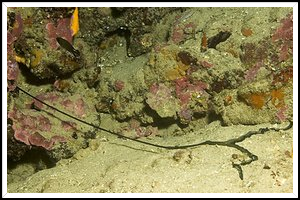
Rock Hake
Quiet, it usually lives in crevices and caves during the day, where it seeks refuge. It hunts decapod crustaceans and fish at night.

Sea horse
It has a long snout and, very often, growths on the head and upper part of the back. The female gives the eggs to the male during the mating display, and he incubates them in a ventral pouch from which the fully formed offspring emerge, like a birth.

Squid
Very common species with a wide bathymetric range. It usually lives a few metres above the seabed, where it preys on fish and crustaceans. It grows quickly and only lives 2 to 3 years. Eggs are grouped in white gelatinous tubes attached to any hard substrate.

Castanet
Solitary or in huge schools. Males defend the nests, which are placed in holes in rocks. Juveniles are electric blue.

Brown sea shoulder
It is the most common cucumber on sandy shallow bottoms and in seaweed ponds. It reproduces during summer sunsets when it is easy to observe in an erect position releasing eggs and sperm.
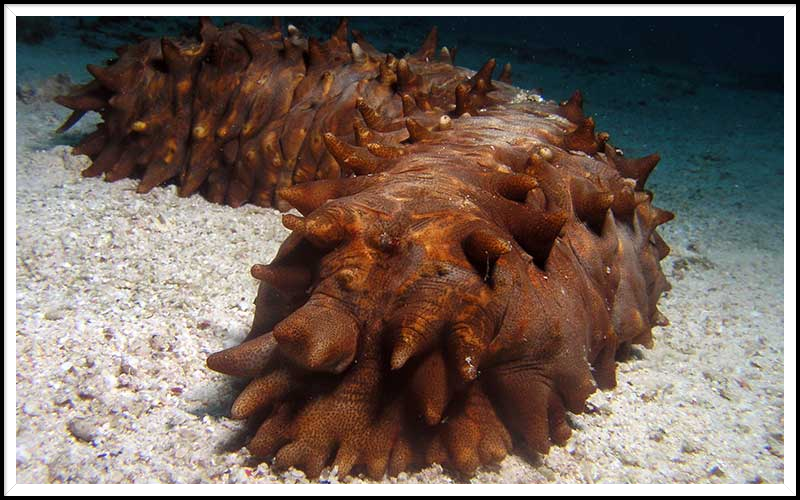
Conger
It takes refuge in caves and holes during the day but hunts at night, when it makes long journeys.

Denton
A large and very voracious predator, it roams the submerged rocky promontories and the limits of the seaweed beds.
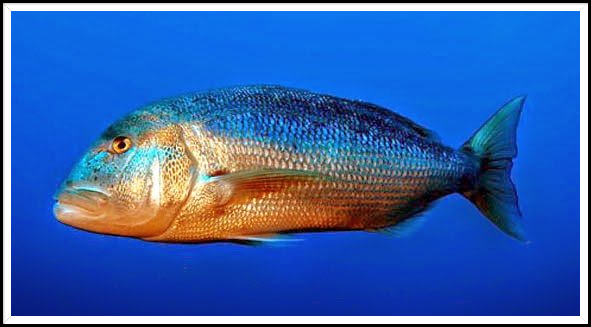
Black hedgehog
Deep black in colour, it frequents shallow rocky bottoms without algae cover.

Hermit
Hermit snails do not build shells, but instead use the shells of dead snails. They use them for protection and only abandon them to use another one. They drag them wherever they go. They live on rocky and sandy bottoms.

Common starfish
Of variable colour, its legs are covered with three rows of short but robust spines. It feeds on crustaceans, molluscs and other echinoderms.

Friday
Of tropical affinities, it is expanding in the northern Mediterranean. It gathers in large groups during the summer to reproduce.

Janolus cristatus
Spectacular medium-sized slug that feeds on small branched bryozoans.

Lobster
Their populations have declined significantly due to overfishing. The long duration of the planktonic larval phase means that new specimens are added to the population from very different places.

Sole
There are several species of sole in the Mediterranean that are difficult to distinguish. They all live on fine sand and mud bottoms, at a certain depth but also in shallow waters of lagoons, estuaries and ports.

Black sea hare
Like other sea hares, it swims with undulating body movements. It has a uniform colour and can reach a length of up to 30 cm.

Lisa
This is the most common mullet species. It has a thick upper lip with lines of small tubercles on the lower part.
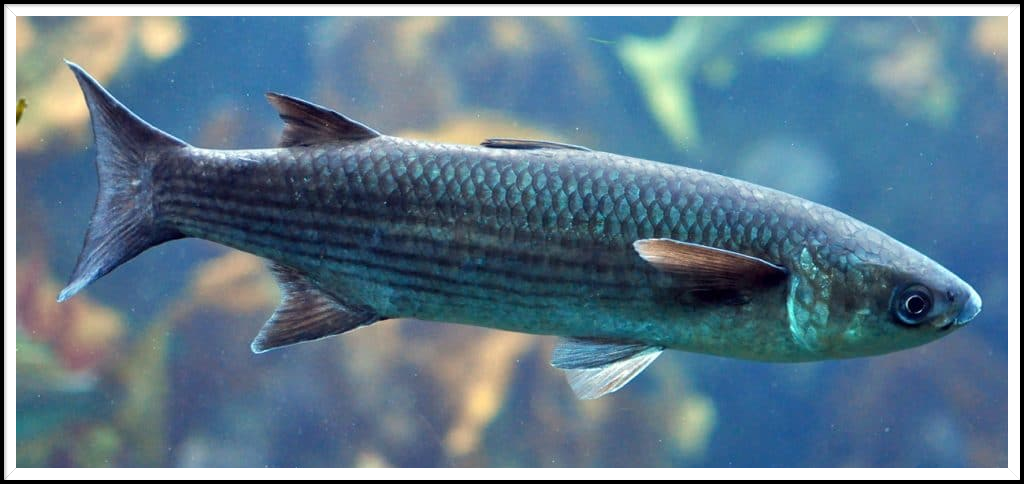
Jellyfish curdled
Typically, juvenile horse mackerels use it to protect themselves from potential predators. Its sting is barely painful to humans.
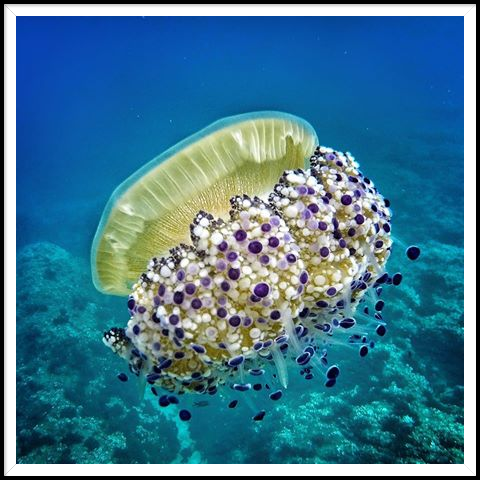
jellyfish jellyfish
A large, whitish jellyfish edged in blue, not very dangerous. Often accompanied by horse mackerel and juvenile bream that take refuge under its tentacles.
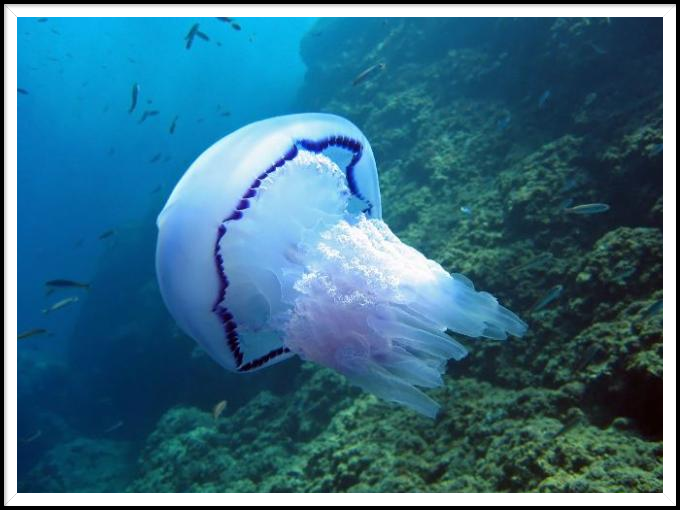
Mere
Perhaps the most emblematic fish of the Mediterranean, it comes in different colours or liveries. Juveniles only appear in shallow waters.
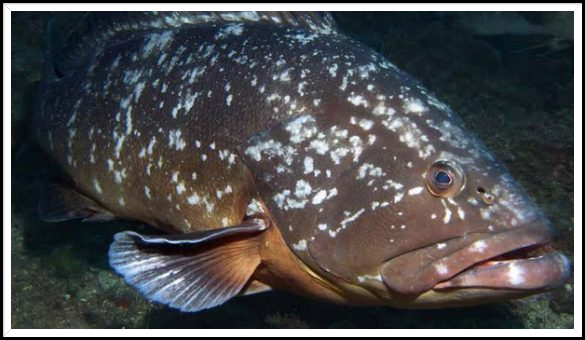
Mojarra
Solitary or in large schools, it is a very common species on rocky bottoms, at a certain depth.

Yellow Moma
Breeding males are yellow with a black head, but females can be distinguished from other similar species by the black spot at the base of the caudal fin.
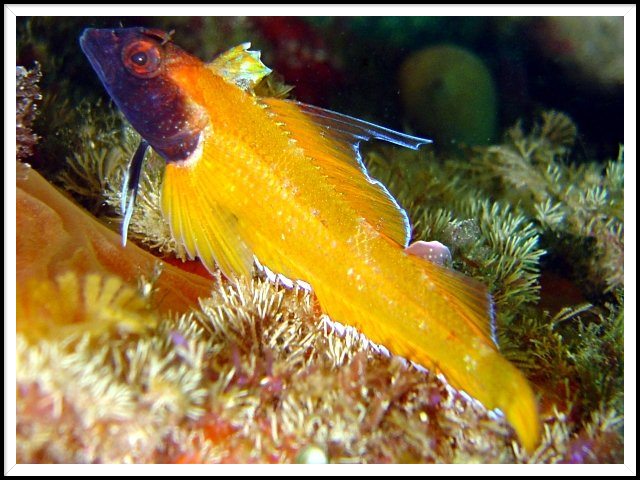
Moma nariguda
Breeding males are red with a black head. Females have no black spot at the base of the caudal fin.
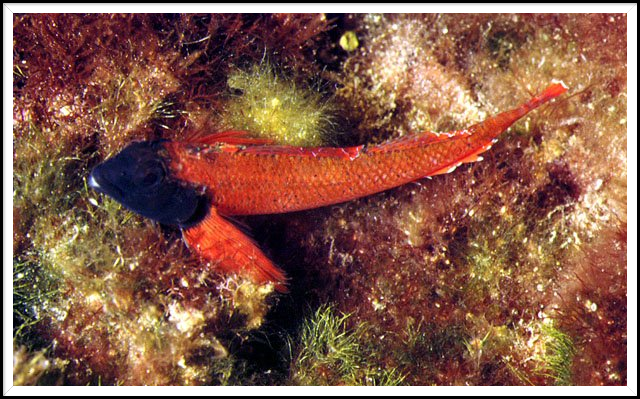
mother of pearl
The largest Mediterranean mollusc, it can reach 1 metre in length. It lives mainly in seabeds and is very vulnerable to anchors.

Black Brittlestar
Arms covered with short spines arranged literally. Blackish arms and bodies.

St. Peter's fish
Unmistakable, it lives in deep waters but we can also see it diving. It has a huge retractable mouth with which it catches its prey, especially fish, sucking them in at high speed.

Sunfish
Large in size, it lives in the water column but can also be seen near the bottom, where it stops to be dewormed by small benthic fish. It generally runs away from divers but sometimes lets them approach it. On calm sea days it rests on the surface of the sea, where it is easier to see.
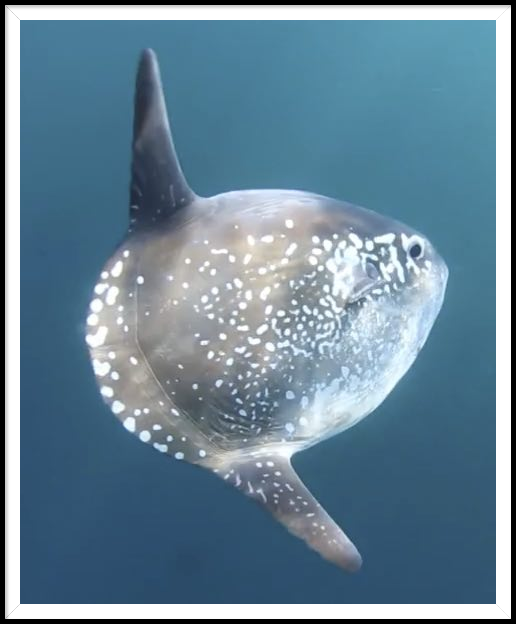
Pink planaria
Small flatworm belonging to the turbellarian group. It preys on sessile invertebrates and lives on rocky bottoms.
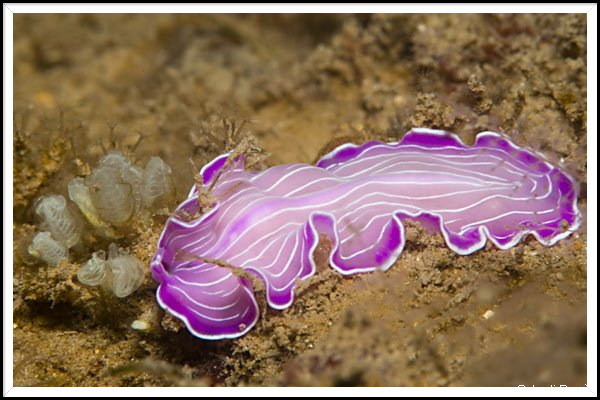
Sea duster
Large membranous tubes with complex, spiral, orange-brown, banded tuft.

Common octopus
Reputed to be the most intelligent invertebrate, it is capable of distinguishing objects and learning. It lives in a wide variety of habitats, where it preys on all types of crustaceans and mollusks.

Spotted octopus
With very long legs and a red body with white spots, it hides during the day and goes out to hunt at night.

Rape
Highly appreciated for gastronomy. It lives in deep waters but can also be observed while diving. It rests on the bottom, from where it attracts its prey by shaking the first dorsal spine that it uses as a lure.

Mosaic Kingdom
Quite rounded in shape and with a particular dorsal coloration, with dark lines and white spots.
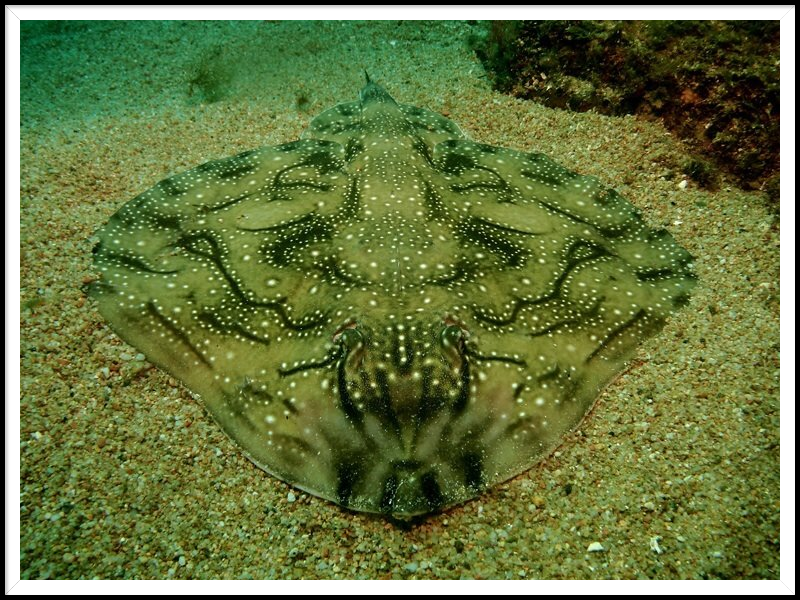
Rubio
With a very vertical forehead and fairly large pectoral fins, with a bluish interior and darker spots. It frequents sandy bottoms.
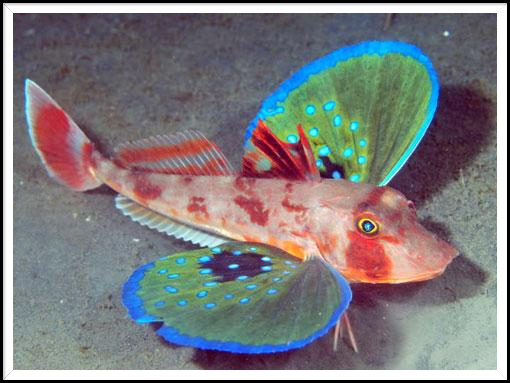
Rock mullet
Solitary or in schools, especially in mixed areas of rock, sediment and seaweed. It rests on the bottom and you will see how it moves it around with its whiskers in search of food.
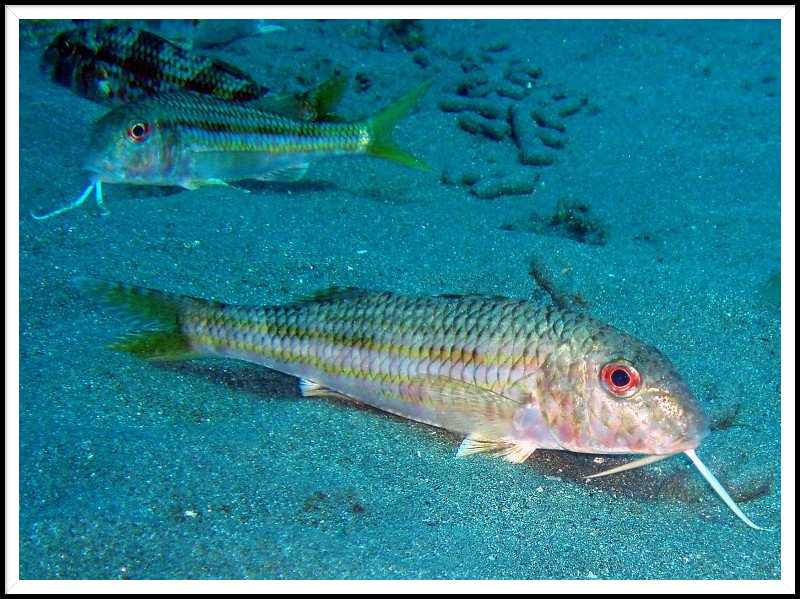
Salmonete real
Commonly found in cracks and small, not too deep cavities during the day, it comes out at night to hunt. The males incubate the eggs in their mouths, which they keep open.
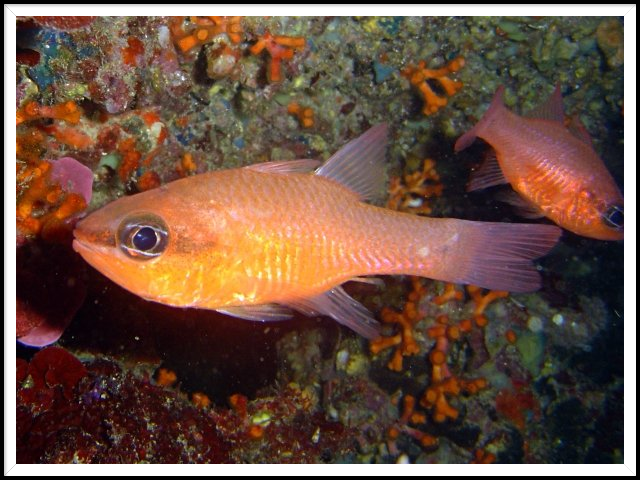
Santiaguiño
It hides during the day in caves, under stones and in the rhizomes of Posidonia. Active throughout the night.

Guard
A voracious predator of mussels and other invertebrates, it is a key species in literal rocky ecosystems as it controls sea urchin populations. It is very sensitive to protection.
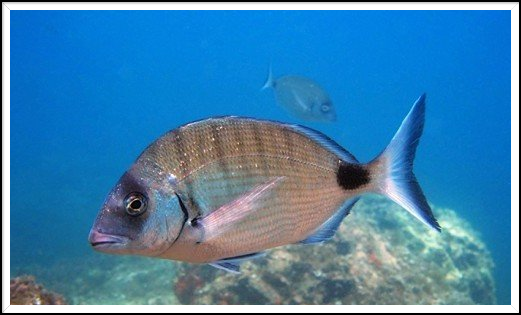
Sepia
Its back is brown, with whitish bands, mottled. Its inner shell is winged at the back. The eggs are spherical, nipple-shaped, black, fixed to any hard substrate.

Swiss cow
Unmistakable, it lives on rocky bottoms where it feeds on sponges.







